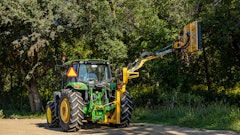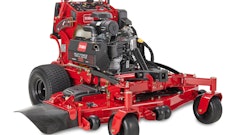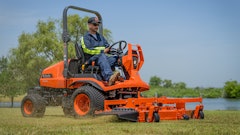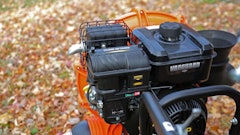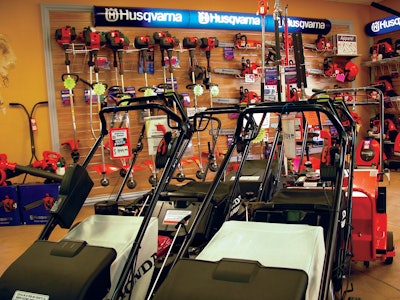
Over the past five years, a growing trend among landscape contractors is to hang onto equipment a year or two longer than usual. For a staple machine like a riding mower, that might mean four or five years now instead of two or three. Holding back on new purchases is an effective way to reduce short-term costs, but there comes a time when it also becomes counterproductive. Keeping vehicles and equipment too long can add to excessive repair bills and costly downtime, and ultimately reduce potential trade-in value of the machines.
So, how do you know when to repair and when to replace?
Estimating Engine Life. “The first major repair item to go on most riding lawn mowers is the engine,” relates Tom Emmett, owner of Emmett Equipment Co. in Richfield, OH. “I give my customers this rule of thumb to follow: On air-cooled engines, multiply the engine horsepower by 100, which will give you the ballpark of the engine’s life, depending on how well it was maintained.”
For example, a mower with a 23-hp engine would have an estimated 2,300 hours of life. Operators should trade in their mower before that number is reached if they want to avoid serious performance issues or having to buy a new engine.
Still, Emmett notes that even at 2,300 hours, many quality mowers will have at least that much additional life left in the drive train, frame, mowing deck and other major components. So repairing an old mower (in this case buying a new engine or short block) isn’t a bad decision, it’s just a choice operators can make—knowing, however, that other components are also closing in on their life expectancy.
“The rule of thumb for mowers equipped with longer-lasting, liquid-cooled engines is 150 times the engine horsepower,” Emmett adds, “which brings engine and mower life closer together. A new engine at that point may not provide the best ROI because it can outlast the machine’s life cycle.”
Maximizing Trade-in Value. Emmett says that keeping equipment too long will accentuate downtime and affect performance, something that can be avoided by trading in equipment every few years. “Many of our (professional) customers still rotate equipment every three years,” he relates. “Assuming they put on an average of 600 hours of mowing a year, they would be replacing the mower before that first large engine repair bill.”
Landscape professionals have two other options, Emmett adds. They can trade in their mowers before their warranty is up, or they can replace their mower with a refurbished used one. This is an attractive option if obtaining credit in order to purchase a new machine is difficult.
Managing Your Vehicle Fleet. When it comes to repairing or replacing trucks in his fleet, Ron Kujawa, a Landscape Industry Certified Manager and owner of Wisconsin-based Kujawa Enterprises, says he generally subscribes to the United Parcel Service (UPS) rule: If it can be repaired like new for less than 50% of the cost of a new vehicle, repair it.
Soft business conditions, however, can force companies to reassess their repair analysis to minimize both repair and replacement costs. “In our repair analysis, we consider safety first, followed by serviceability and cosmetics,” Kujawa emphasizes. “Our older trucks may not look like new, but they have to be safe and reliable.”
Don’t Get Stuck With Equipment That Isn’t Utilized. Another rule is to avoid purchasing equipment unless you really need it. “A lot of landscape contractors have paid the price for having excess capacity,” Kujawa points out, while adding that idle trucks and equipment become a needless overhead expense. Consider renting or leasing for the more occasional applications.
Practice Preventive Maintenance, and Watch for Warning Signs. Both Emmett and Kujawa emphasize that purchasing quality equipment and keeping it on a preventive maintenance schedule is the best way to contain repairs costs and optimize equipment longevity.
“You will know when you’ve kept a piece of equipment too long,” says Emmett. “Engines will start burning excessive amounts of oil, downtime will increase, and performance may start falling off. Savvy operators will trade in their machines before that point.”
THE BOTTOM LINE is this: You charge customers for a service. The service is provided by your labor, and the equipment and materials you use. Those items—in addition to your overhead and desired profit margin—are all factored together to determine your price. Thus, you are ultimately charging your customer for your equipment. When you think of it that way, why in the world would you want to run equipment far beyond its effective life?



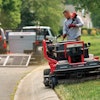

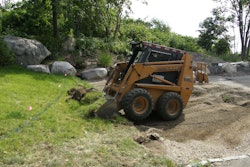
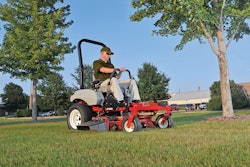
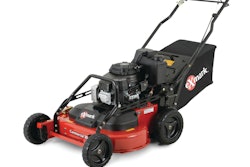
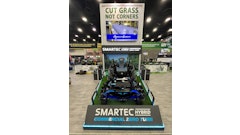




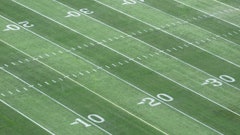
![U8kj71gt 720[1]](https://img.greenindustrypros.com/mindful/acbm/workspaces/default/uploads/2025/10/u8kj71gt-7201.8OyDyc124u.jpg?ar=16%3A9&auto=format%2Ccompress&fit=crop&h=135&q=70&w=240)
